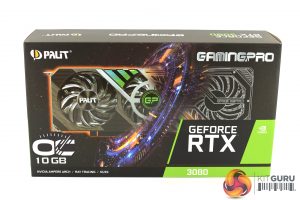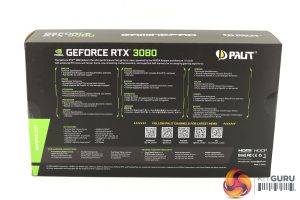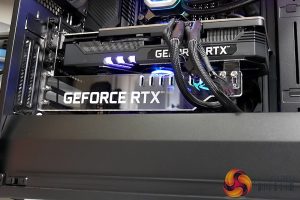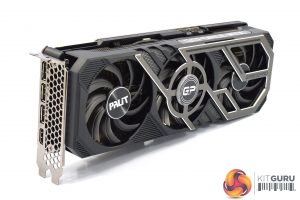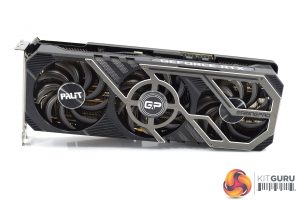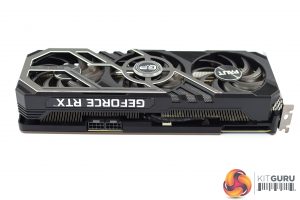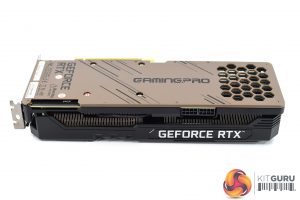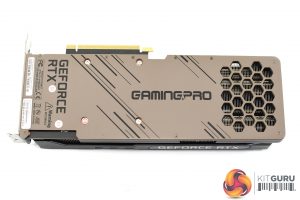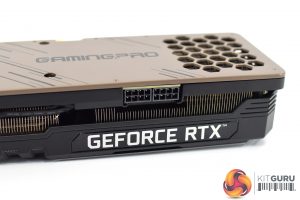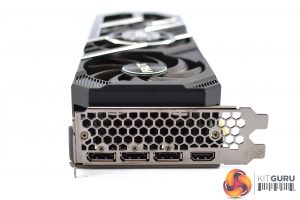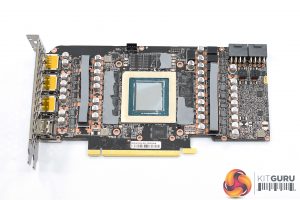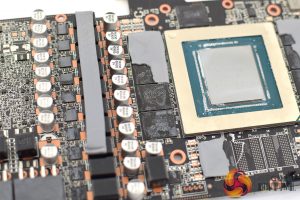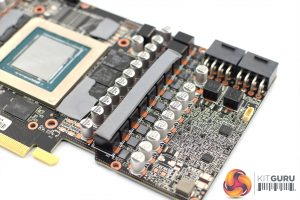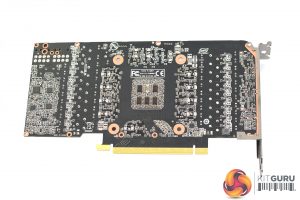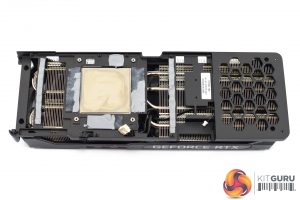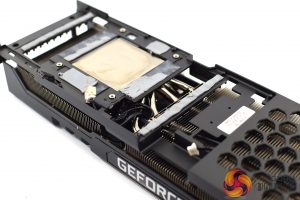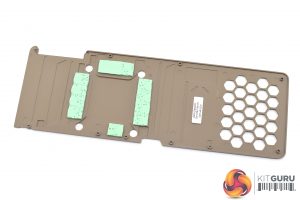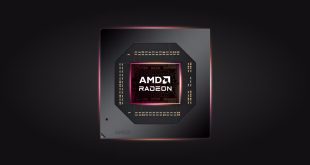The Palit RTX 3080 GamingPro OC ships in a black box, with a large image of the graphics card visible on the front.
On the back, there is some multi-lingual product information, highlighting support for DirectX 12 and OpenGL 4.6.
For the included accessories, there's a small user manual, but more interesting is the transparent plastic support bracket. I wouldn't say this is strictly necessary for the GamingPro OC as it is not that big of a card – it's certainly not an MSI Gaming X Trio, put it that way – but it's a nice extra to have included. Above you can see it installed in our Fractal Meshify S2 case, as it proved nearly impossible to photograph with a white background as it is almost completely transparent.
The card itself would look pretty conventional were it not for the metal plate that has been screwed into the plastic shroud. This gives it a pretty eye-catching look, and while it isn't to my taste personally, I can see why it might appeal to some of our audience.
The metal plate sits over two of the three fans, and these measure approximately 85mm in diameter. Using Palit's new TurboFan 3.0 design, these use dual ball bearings and come with IP5X certification. Unlike ASUS and Gigabyte, all three fans spin in the same direction.
In terms of its size, the GamingPro OC certainly isn't small in an objective sense, but is the smallest RTX 3080 partner card we have seen. It measures 294 x 112 x 60 mm, so it is relatively narrow but still fairly long at almost 30cm.
We can also get a look at the unique backplate design. It is a metal backplate that has an almost bronze colour to it, depending on the light. Several honeycomb cutouts are also visible towards the end of the card, designed to allow air to pass directly through the heatsink.
For power requirements, the Palit uses two 8-pin connectors, while we can see the standard array of video outputs – 3x DisplayPort 1.4a, and 1x HDMI 2.1.
Removing the heatsink from the card isn't tricky, but simply doing so resulted in the tearing of all the thermal pads contacting with the memory, which is quite frustrating. I didn't try to prise the pads off, the damage was done just by slowly pulling the heatsink from the PCB. If you buy a GamingPro OC and do want to disassemble the card, perhaps to replace the thermal paste, I'd strongly recommend having a spare set of thermal pads on hand.
That aside, we can see Palit is using what appears to be a reference design, with a 14+2 phase VRM configuration. Memory comes from Micron's D8BGW GDDR6X modules, which run at 19Gbps.
The heatsink itself is covered by a large die-cast aluminium alloy plate. This contacts directly with the memory and VRM. Beneath it, we can see two fin stacks which are connected by a total of 6x 6mm nickel-plated heatpipes.
The metal backplate also contacts with the back of the memory modules via thermal pads.
 KitGuru KitGuru.net – Tech News | Hardware News | Hardware Reviews | IOS | Mobile | Gaming | Graphics Cards
KitGuru KitGuru.net – Tech News | Hardware News | Hardware Reviews | IOS | Mobile | Gaming | Graphics Cards


